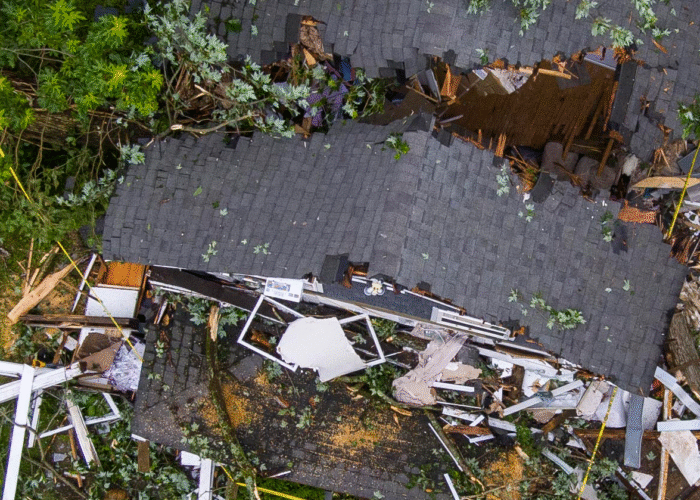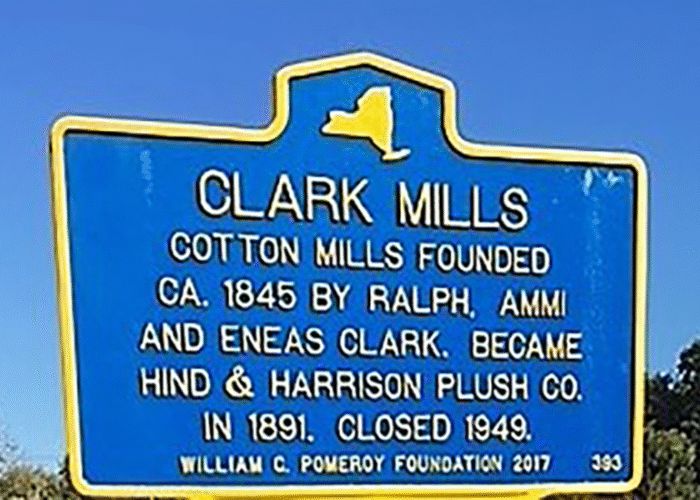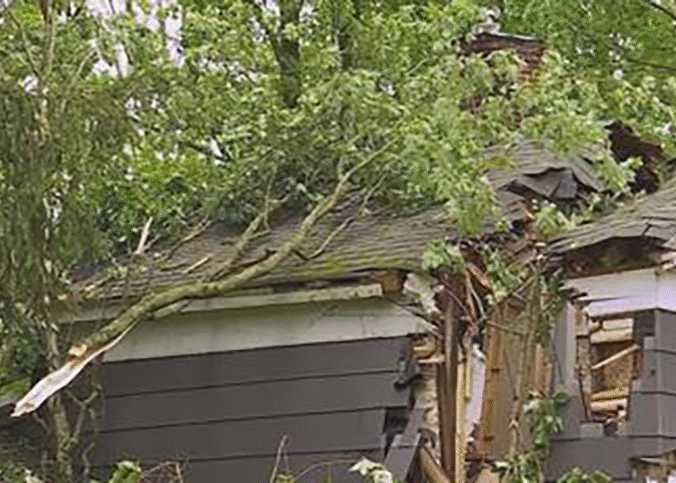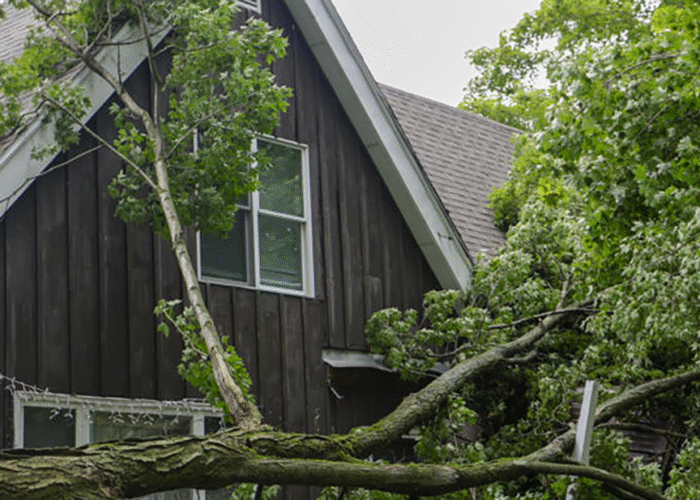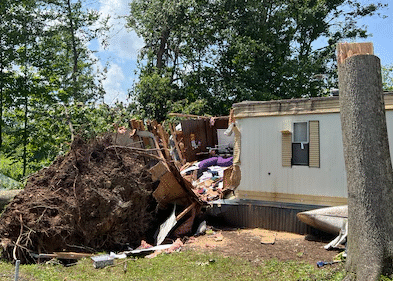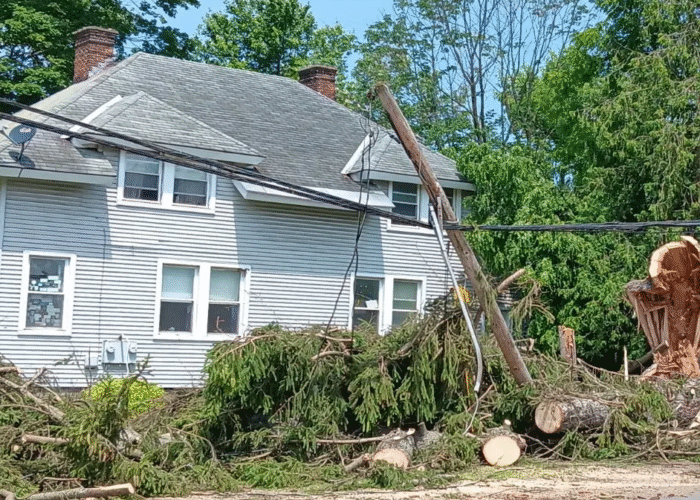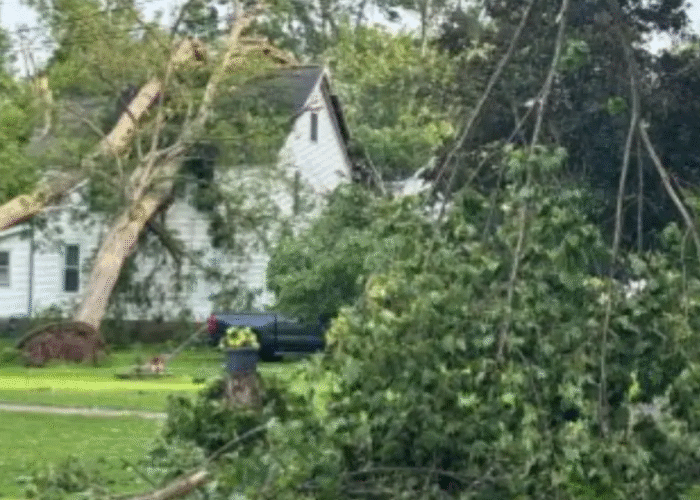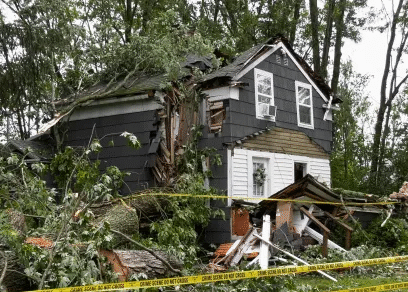Tornado Tragedy in Clark Mills: Community Rises After Deadly Storm
A rare EF-1 tornado devastates Oneida County, leaving tragedy, destruction, and a powerful call for unity and resilient recovery.
The recent EF-1 tornado that tore through Clark Mills, Oneida County, shocked residents with its 105 mph winds, significant property damage, and heart-wrenching loss of life. In just five minutes, the storm carved a 2.43-mile path, uprooted centuries-old trees, destroyed a historic grist mill along Oriskany Creek, and claimed the lives of three locals. This blog post examines the storm’s destructive course, the tragic fatalities in Kirkland, widespread damage and power outages, and the community’s determined response and recovery efforts. The report draws on data and quotes from local authorities and news outlets while addressing the critical need for preparedness and mutual support in times of natural disasters.
The Tornado’s Path and Unprecedented Destruction
A Night of Unimaginable Fury
In the early hours around 3:58 a.m., an EF-1 tornado materialized in the Clark Mills area as residents slept unaware of the imminent danger. The National Weather Service confirmed that the tornado reached peak winds of 105 mph and maintained its violent force for approximately five minutes, scouring a path that stretched nearly 2.43 miles. The winds tore through the landscape, uprooting trees, damaging structures, and even demolishing a 19th-century grist mill—a symbol of the area’s rich heritage along Oriskany Creek.
Meteorologist Ben Lott described the atmospheric conditions as a “freak chain of events” triggered by an unusually strong convective system. The rarity of such an event in upstate New York has forced officials to reexamine their emergency preparedness protocols even as the community grapples with the scale of destruction.
Historic Landmarks and Community Identity Shattered
The loss of the historic grist mill not only represents material devastation but also erases a piece of local history cherished by generations. Clark Mills, known for its historic charms and close-knit community spirit, faces the removal of one of its cultural landmarks. Emergency management officials stress the importance of preserving historical data and remembrances, even as funds and efforts shift urgently toward recovery and rebuilding.
Tragic Losses in Kirkland: Lives That Will Not Be Forgotten
Heart-Wrenching Fatalities
The storm’s cruelty struck hardest in the Town of Kirkland. A tree, dislodged by the violent force of the tornado, fatally crushed twin six-year-old sisters, Emily and Kenni Bisson as it fell onto their home along Hoyland Avenue. Both girls, bright first-grade students at Clinton Elementary School, were known for their cheerful disposition and active participation in local events. In another tragic incident, 50-year-old Shelly Johnson lost her life when a tree crashed onto her residence on Millstream Court.
Oneida County Sheriff Robert Maciol stated, “Our hearts go out to the families affected by this unimaginable tragedy. We urge everyone to exercise extreme caution during inclement weather and adhere to safety advisories.” These losses have deeply impacted the community, prompting a surge of support across the region.
Community Outreach and Remembrance
In a show of solidarity, local residents have rallied around the bereaved families. Campaigns on platforms like GoFundMe have already raised significant funds to help cover expenses and foster recovery. School officials and community leaders are organizing counseling sessions and memorial events to ensure that the memories of the young lives lost are honored and that support systems remain active for those in mourning.
Widespread Damage: Homes, Power, and Infrastructure in Ruins
Power Outages and Utility Challenges
The severe storm system did not stop at taking lives and heritage. It left over 94,000 customers without power, with nearly 60,000 affected in Central New York and around 38,000 in Oneida County alone. In the immediate hours following the tornado, utility companies raced against the clock. National Grid, with over 2,500 workers deployed, began a massive effort to restore electricity. By the next morning, nearly 59,000 customers had their power reinstated while full restoration was scheduled by late Tuesday night. In some remote areas, however, power issues may linger into Wednesday as crews battle to clear fallen debris and damaged lines.
Damage to Homes and Businesses
Counties including Kirkland, Lee, Westmoreland, Trenton, and the hamlet of Clark Mills experienced extensive structural damage. In Utica, one of the hardest-hit cities, powerful winds ripped off part of the Hotel Utica restaurant’s back patio while trees and power lines fell in droves across neighborhoods. Property owners find themselves confronting high repair costs, and the physical scars of this event have set the stage for long-term recovery and rebuilding programs.
Emergency Declarations and Statewide Mobilization
Swift Action from Authorities
Recognizing the magnitude of the devastation, Governor Kathy Hochul swiftly declared a State of Emergency for 32 counties, including Oneida, Madison, and Herkimer. This declaration allows state resources to be mobilized rapidly in support of the affected regions. “We are fully committed to assisting every community impacted by this storm,” Governor Hochul affirmed in a statement that underscored the government’s proactive stance in disaster management.
Local leaders were quick to follow suit. Oneida County Executive Anthony Picente and officials in the City of Oneida announced local state emergencies, ensuring that emergency funds, equipment, and personnel were immediately directed to where they were needed most. In neighboring Madison County, Sheriff Todd Hood issued a travel advisory as flash flooding and storm debris made roads perilous.
A Coordinated Response for Recovery
Efforts to restore normalcy are multifaceted. Emergency response teams are clearing debris, setting up temporary shelters, and providing critical supplies such as bottled water and dry ice at central locations like the Kirkland Senior Center in Clark Mills. Local government agencies have partnered with the Community Foundation to establish recovery funds that aim to help families rebuild their lives. This coordinated response emphasizes both immediate relief and support for the long-term rehabilitation of affected communities.
Historical Context and the Rarity of Severe Tornadoes in New York
Tornado Records and the Unpredictability of Nature
New York State, known more for its temperate climate than violent storms, rarely experiences tornadoes of such force. The Clark Mills tornado is now classified as one of the deadliest in the state’s history, rivaling the catastrophic outbreak in Smithfield in 2014. Such events, though rare, underscore that no community is entirely immune from the whims of nature. Meteorological experts continue to monitor climatic changes and advise increased community readiness, even in regions where tornadoes have been historically uncommon.
Learning From Past Disasters
Historical comparisons have spurred several initiatives aimed at strengthening local infrastructure and public safety measures. Communities now invest more in early warning systems, robust emergency kits, and public education programs designed to mitigate the impact of future disasters. This dual recognition of historical precedence and modern vulnerability is key to fostering a resilient community prepared to face unforeseen challenges.
Community Resilience and the Road to Recovery
A Unified Response: Neighbors Helping Neighbors
In the wake of this disaster, the remarkable spirit of Clark Mills and its neighboring towns has come to the fore. Residents are volunteering, donating resources, and organizing support networks to help displaced families and those facing extensive repair costs. Local organizations, businesses, and even schools have partnered to offer immediate relief to anyone in need. A community volunteer remarked, “We may be shaken by this event, but the strength of our neighbors shines through as we rebuild together.”
Preparing for Future Storms: A Call to Action
This tragedy stands as a sobering call for further investment in disaster preparedness. While government agencies and utility companies have shown commendable efficiency in responding to the crisis, residents are encouraged to take personal steps to prepare for severe weather. Maintaining updated emergency kits, staying informed through local news channels, and participating in community preparedness programs can all make a difference when nature once again challenges our safety.
Building Back Better
The road to recovery, though steep, is paved with determination and shared purpose. Local politicians, emergency managers, and community leaders are already planning projects aimed at sustainable rebuilding. These initiatives include strengthening building codes, enhancing communication networks, and expanding community outreach programs. A reconstruction plan that learns from the events of this tornado may well lay the groundwork for a more resilient future in Oneida County—a future where the community stands united against any threat.
Standing Together Amid Adversity
The EF-1 tornado that hit Clark Mills serves as a stark reminder of our vulnerability in the face of severe weather. Yet, this event has also illuminated the incredible resilience of Central New York’s communities. Lives have been lost, and cherished landmarks have crumbled. Still, through swift emergency response and the unwavering support of neighbors, there is a strong foundation for recovery. Readers are encouraged to support local relief funds, volunteer with community initiatives, and ensure personal preparedness as we work together to rebuild our homes and lives. Now is the time to stand together and show that even in the face of tragedy, hope endures.



